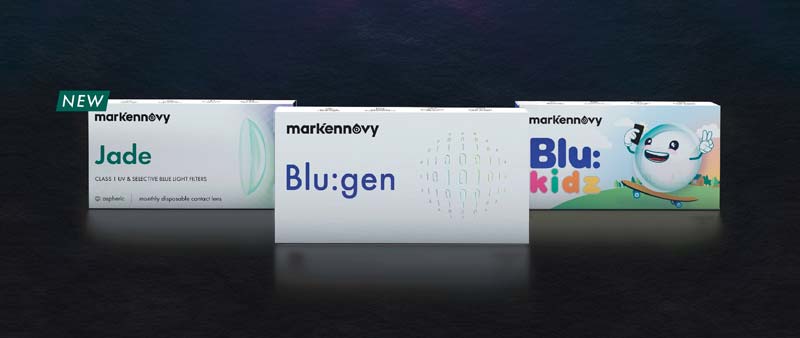Where does blue light really come from?

Industry communication focuses on digital devices as the primary source of harmful blue light. The sun, however, is the light source we should be most concerned about. It is ten times more powerful than any artificial light source (1), and the leading source of harmful blue and UV light (280 – 450nm).
The sun has by far the broadest emission spectrum with radiations from the longer wavelengths of ultraviolet through the shorter wavelengths of infrared (2). The range of potentially harmful light ranges from 280 to 450nm, which includes 3 types. The first two (UVB and UVA) are commonly referred to as UV light, of which UVA is of most concern for our eyes. The third type is blue-violet light, which sits next to UVA light on the spectrum and, like its neighbour, is considered to be a threat to our eye health.
Little understood by many people, the amount of harmful light that we are exposed to every day is highly variable, with some of the most common factors being:
-
- Time of the year, which can vary dramatically from the peak of winter to the peak of summer.
- The position of the sun: Most UV light reaches ground level typically late morning or early afternoon.
- The ground we are standing on: Different surfaces reflect light at varying intensities, with grass being the least reflective (only 3% of light is reflected back up off the ground) to fresh white snow (where 80% of the light is reflected back up).
- Height & Altitude: The higher you are, the more exposed to light you are (for every 1000m = another 10% of exposure).
- Clouds: The heavier and denser the clouds, the harder it is for light to penetrate.
Also, the risk of overexposure is increasing every day. The long-term impacts of being overexposed to harmful blue and UV light are still being researched. However, we can already summarise some potential effects of overexposure to our eyes:
| UV | BLUE-VIOLET |
| Photokeratitis | Risk of ocular damage |
| Development of Pinguecula, Pterygium, Photoconjunctivitis | Apoptosis – retinal pigment epithelial cell death |
| Cataract Formation | Trigger of A2E – which may result in degeneration of photoreceptor cells |
| Contributing factor to AMD as suggested by early studies | Contributing factor to AMD as suggested by early studies |
Not to mention its effects on vision: intraocular scattering causing reduced contrast sensitivity and glare, and over-accommodation due to chromatic aberration. (3,4,5,6)
mark’ennovy’s range of monthly soft contact lenses, Blu:gen, Blu:kidz and Jade, offer both selective blue light and Class 1 UV filters, which block at least 14% of ultra-violet blue light, 93% of UVA, and 99% of UVB light. Additionally, its exceptional combination of parameters and geometries allows you to cater to almost any eye shape and size, ensuring the most adequate contact lens fit for every patient.
References:
(1) Marshall J. Blue Light Paradox: Problem or Panacea. Seminar, March 16, 2017, London, UK.
(2) Behar-Cohen F, Baillet G, Ayguavives T De, et al. Ultraviolet damage to the eye revisited: eye- sun protection factor ( E-SPF®), a new ultraviolet protection label for eyewear. Clin Ophthalmol. 2014;8:87-104.
(3) Coppens JE, Franssen L, van den Berg TJTP. Wavelength dependence of intraocular straylight. Exp Eye Res. 2006;82:688-692.
(4) Liu Y, Wang Y. The research progress of straylight in human eyes. Chinese J Ophthalmol. 2016;52(1):73-76.
(5) Jaskulski M, Marín-Franch I, Bernal-Molina P, López-Gil N. The effect of longitudinal chromatic aberration on the lag of accommodation and depth of field. Ophthalmic Physiol Opt. 2016;36:657-663.
(6) Hammond BR. Attenuating photostress and glare disability in pseudophakic patients through the addition of a short-wave absorbing filter. J Ophthalmol. 2015;2015.
26
februari 2018







 Academy
Academy 
Geef een reactie